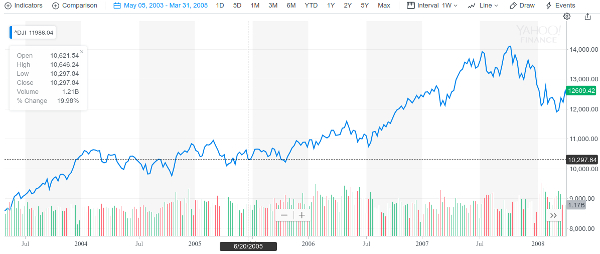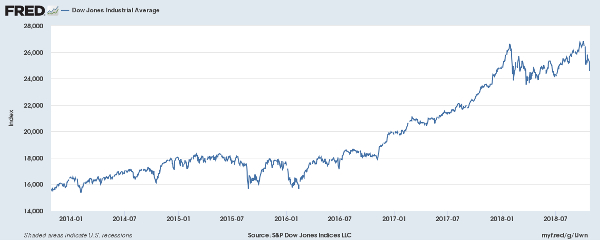The rebound in stock markets earlier this month had many investors believing that the turbulent and volatile behavior of markets that has occurred since the highs reached in February was finally over. The Dow Jones and S&P 500 reached new highs and commentators everywhere were touting that as proof that the economy was on fire and markets were poised to go even higher. But the massive slide two weeks ago and the continuing correction since then has shown that markets have topped out. It may take a while for markets to bottom out, but investors who can foresee what’s coming can act now to make sure that their assets are protected well before the worst part of the coming crash.
Compare the Charts
Every time stock markets start to retreat from record highs, we hear advice about buying the dip. The optimists like to say that the corrections are only temporary, a brief respite while stocks resume their upward growth. In some cases they actually believe that, while in others they have an incentive to keep retail investors buying into markets even though they know things will go bad.
While past performance isn’t an indicator of future performance, and while every stock market crash follows its own specific patterns, there are some general patterns that they all tend to follow. The chart below shows growth in the Dow Jones Industrial Average from 2003 to 2008.

Source: Yahoo! Finance
You can see that for much of that period the growth in the Dow Jones was relatively steady, until it began to accelerate in mid-2006. By mid-2007 the Dow had reached an all-time high of nearly 14,000 points. After a mild correction, the Dow continued to grow, peaking again over 14,000 points before correcting yet again. There’s another rise yet again to the high 13,000s before the gradual slide downward through 2008. Now look at what stocks are doing right now, with a graph of the last five years of Dow Jones performance.

Source: S&P Dow Jones Indices LLC, Dow Jones Industrial Average [DJIA], retrieved from FRED, Federal Reserve Bank of St. Louis; https://fred.stlouisfed.org/series/DJIA, October 24, 2018.
There’s a pretty similar pattern here, with relatively stagnant growth until 2016. Things really begin to take off in early 2017, finally reaching a peak in early 2018. Then we have the correction and stagnation of the past eight months before new peaks in October. The duration between the two peaks was a little longer than in 2007, but the same pattern still holds. After this double peak expect to see market fighting the downward pull for a few more months until the downward trend becomes really obvious.
Buying the Dip Now Is Dangerous
Those who think that they can buy the dip and continue to reap rewards are playing with fire. Anyone who looks at the charts can tell that we’re in the late stages of the business cycle. The boom has run its course and the bust is about to ensue. Thinking that stocks will break out to new highs is wishful thinking, much along the lines of “This time things are different.”
But the business cycle isn’t rocket science. It has happened time and again over the centuries as governments involve themselves in monetary affairs. The roots of this business cycle are well-known – the response of the Federal Reserve to the last financial crisis. With trillions of dollars of new money entering the financial system, it was only a matter of time before all that money made its way into stock markets. Now we’re seeing the late stage of the boom, with the bust just around the corner.
How to Protect Your Assets
Savvy investors know that they need to protect their assets against a stock market crash, and they can see that crash coming on the horizon. Whether it’s looking at charts, observing markets, or understanding the nature of business cycles, those investors have started moving their money out of stocks and into more stable, secure assets such as gold.
Even supposedly safe assets such as bonds aren’t going to be of much help in safeguarding wealth this time around, as low interest rates have spurred the issuance of trillions of dollars of debt over the past decade. Much of that debt is of low quality, issued by companies that otherwise wouldn’t have been able to remain in operation or that issued debt in order to buy back stock in order to boost their share price.
With both stocks and bonds set to enter bear markets, that leaves gold as the only really viable option for investors looking to safeguard their wealth and still make a return on their investment. Gold has already started rising in value in response to stock market weakness, and in the event of an all-out crisis will only gain more and more value.
With a gold IRA, even retail investors can invest in gold easily. Transfers of retirement assets from a 401(k), IRA, or TSP account can be made into a gold IRA quickly, safely, and tax-free, allowing investors to enjoy the protective benefits of gold while still maintaining the tax advantages of a traditional retirement account. So if you’re wondering where to place your money in advance of the coming bear market, make sure that gold is at the top of your list.
This article was originally posted on Goldco.




